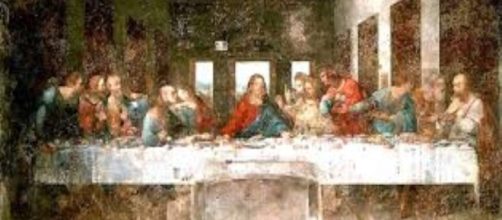Last month, BBC Radio food writer Stefan Gates went to Milan to check out the menu in The Last Supper,Leonardo da Vinci’s mural painting in the Santa Maria delle Grazie monastery. Certainly, this was a logical inquiry for a food writer; but you have to wonder why Carol Kuruvilla, associate religions editor for the Huffington Post would choose to report Gates’ "what’s-for-dinner” question unless it was to consider the food choices in terms of theholy celebration of Passover. But she didn’t.
Kuruvilla merely recounted the opinion of a former art professor at Mount Holyoke College, John Varriano, who contended that the main meal was eel even though he admitted that the Bible offered zero justification for his claim.
In fact, according to the Bible, eel is not kosher for Passover or any meal. Why did Varriano say eel? It was popular fare in Leonardo’s day, he said. So was roast pork, but you wouldn’t serve that to celebrate a Jewish holiday, either.
What the Scriptures say
There was no comment from Kuruvilla on any of this – clearly a lost moment for a religion writer. Apart from quoting an art teacher, she could have cited scripture to make the point that while Jesus was a rebellious Jew, he was still a Jew who would have shunned eel. Otherwise, why conduct a Biblically decreed Passover meal and disregard a Biblically decreed food no-no?
Another point that Kuruvilla could have made is that despite those who say the ‘last supper’ wasn’t a Passover meal because it occurred the night before Passover, Jewish holidays begin the night before.
Did Leonardo know that? According to Giorgio Vasari, an art historian in Leonardo’s day, “Everything he does clearly comes from God...” Given that the Bible is God’s word, it follows that Leonardo knew.
Talk about minutia
All that said, The Last Supperis not about supper dishes, it’s about the moment that Jesus told his disciples that one of them would betray him. Leonardo painted their reactions – their facial expressions and gestures. It took him three years. The Prior of the monastery complained about the slow progress to the Duke of Milan, Ludovico Sforza. Leonardo explained that he was struggling to imagine Christ’s head with enough celestial air and Judas head with enough cruelty. Ultimately, he visited the part of town where criminals lived to find a face treacherous enough for Judas’ head.
But he left Christ’s head unfinished.
Deterioration of the painting is on Leonardo
For all the discussion and all Leonardo’s effort, the painting is in bad shape and for good reason. He was a slow painter and you can’t take long with fresco because it requires applying wet paint on a wet surface. To slow the drying process, he coated the monastery wall with oil-based pigment and painted the scene over it with the water-based variety, which flaked off after a time. This is odd since Leonardo was an expert in chemistry. But then again, who doesn’t know that oil and water don’t mix?

